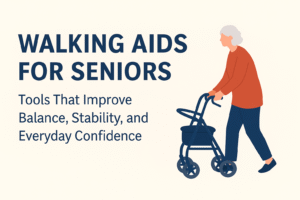Online shopping has transformed the way we purchase everything, from groceries to electronics. While it’s convenient and often cost-effective, it also comes with potential risks like fraud, identity theft, and scams. To help you navigate the world of e-commerce securely, this step-by-step guide outlines practical tips for safe online shopping.
1. Start with a Secure Device
Before you begin shopping, ensure your device is secure and up to date.
Steps to Secure Your Device:
- Install Antivirus Software: Protect your device from malware and phishing attacks.
- Keep Software Updated: Regular updates fix security vulnerabilities in your operating system and apps.
- Enable a Firewall: Adds an extra layer of protection against unauthorized access.
- Avoid Public Wi-Fi: Use a private and secure internet connection instead of public networks.
Why It Matters:
A secure device ensures that your personal and financial information isn’t exposed to hackers or malicious software.
2. Choose Trusted Websites
Not all online stores are created equal. Shop only from reputable websites to reduce your risk of fraud.
How to Identify a Trusted Website:
- Look for HTTPS: Ensure the website’s URL starts with “https://,” indicating a secure connection.
- Check the Padlock Icon: A padlock next to the URL signifies that the site uses encryption.
- Read Reviews: Look for customer reviews and ratings to verify the site’s legitimacy.
- Avoid Pop-Up Stores: Be cautious of ads that redirect you to unknown websites.
Tip:
Stick to well-known retailers like Amazon, Walmart, or the official websites of brands.
3. Use Strong Passwords and Account Security
If you’re creating an account on a shopping site, prioritize security to protect your data.
Steps for Strong Account Security:
- Create Unique Passwords: Use a mix of uppercase letters, lowercase letters, numbers, and symbols.
- Enable Two-Factor Authentication (2FA): Adds an extra layer of protection by requiring a one-time code.
- Avoid Reusing Passwords: Use a password manager to generate and store unique passwords for each site.
Why It Matters:
Strong passwords prevent hackers from accessing your account and personal details.
4. Be Wary of Deals That Seem Too Good to Be True
Unbelievably low prices or unrealistic discounts are often a red flag for scams.
Signs of Fraudulent Deals:
- Extremely high discounts on expensive items.
- Limited-time offers that pressure you to act quickly.
- Misspelled brand names or poorly designed websites.
What to Do:
- Compare prices on multiple sites to ensure the deal is legitimate.
- Avoid clicking on ads or links in unsolicited emails or messages.
5. Prioritize Secure Payment Methods
Using secure payment options reduces your risk of financial fraud and provides buyer protection.
Best Payment Practices:
- Use Credit Cards: Credit cards often offer better fraud protection than debit cards.
- Avoid Direct Bank Transfers: These are harder to reverse in case of fraud.
- Consider Digital Wallets: Services like PayPal, Apple Pay, or Google Pay add an extra layer of security.
- Never Send Cash: Physical cash transactions for online purchases are a major red flag.
Tip:
Check your bank and credit card statements regularly for unauthorized transactions.
6. Monitor for Phishing Scams
Phishing scams are attempts to steal your information by posing as legitimate entities.
How to Identify Phishing Scams:
- Emails with urgent requests for personal or financial information.
- Links that redirect to fake websites.
- Poor grammar and spelling errors in communications.
How to Protect Yourself:
- Never click on links in unsolicited emails or text messages.
- Verify the sender’s email address.
- Access websites directly by typing the URL into your browser instead of clicking on links.
7. Double-Check Your Order Details
Before completing your purchase, review all the details carefully.
What to Verify:
- Product descriptions and specifications.
- Quantity and price.
- Shipping costs and delivery timeframes.
- Return and refund policies.
Why It Matters:
Double-checking your order prevents mistakes and ensures you receive what you intended to buy.
8. Understand Return and Refund Policies
Knowing the return and refund policies can save you headaches if something goes wrong with your order.
Key Points to Look For:
- Timeframe for returns (e.g., 30 days after purchase).
- Restocking fees or shipping costs for returns.
- Conditions for eligible returns (e.g., unopened packaging).
Tip:
Take a screenshot of the policy for reference in case of disputes.
9. Protect Your Personal Information
Share only the information necessary to complete your purchase.
What to Avoid Sharing:
- Social Security Number.
- Full date of birth unless required.
- Passwords or PINs.
How to Stay Safe:
- Use guest checkout if possible.
- Opt out of storing payment information on the website.
10. Track Your Order
Tracking your package helps ensure it arrives as expected and allows you to act quickly if there are issues.
How to Track Your Order:
- Use the tracking number provided by the retailer.
- Enable delivery notifications for real-time updates.
- Contact customer service immediately if the package is delayed or missing.
11. Secure Your Email Account
Since many online purchases involve email confirmations, securing your email account is critical.
Best Practices:
- Use a strong, unique password for your email.
- Enable two-factor authentication.
- Be cautious of unsolicited emails related to your online purchases.
12. Regularly Monitor Your Financial Accounts
Keep an eye on your financial accounts to spot unauthorized transactions quickly.
Steps to Monitor Effectively:
- Check bank and credit card statements weekly.
- Set up alerts for large transactions.
- Report discrepancies immediately to your bank or card issuer.
13. Avoid Saving Payment Information on Websites
While it may be convenient, saving your payment details increases the risk of theft if the website is compromised.
Alternative Solutions:
- Use a secure digital wallet.
- Manually enter payment details for each purchase.
14. Shop Locally When Possible
Supporting local businesses online reduces shipping times and may offer better customer service.
Benefits:
- Easier returns and exchanges.
- Direct support for your community.
How to Find Local Online Stores:
- Search for local businesses through Google or Yelp.
- Use social media to discover small businesses in your area.
15. Be Cautious with Mobile Shopping Apps
While shopping apps are convenient, they also pose risks if not used carefully.
Tips for Safe Mobile Shopping:
- Download apps only from official app stores.
- Review app permissions before installation.
- Avoid entering payment details on public Wi-Fi.
Conclusion
Shopping online can be a safe and enjoyable experience when you take the right precautions. By following these steps—from securing your device to using trusted payment methods and monitoring for scams—you can protect yourself from potential risks. With a little vigilance, you can enjoy the convenience and variety of online shopping with peace of mind. Happy shopping!
Other Articles

Walking Aids for Seniors: Tools That Improve Balance, Stability, and Everyday Confidence
Walking aids can make everyday movement safer, steadier, and far more comfortable for seniors who experience balance changes, joint stiffness, or reduced mobility. These tools aren’t a sign of weakness—they’re

Best Portable Power Stations for Home Backup in 2025
Reliable, Quiet, and Senior-Friendly Backup Power Options You Can Count On Power outages are becoming more common every year. Whether caused by bad weather, aging power grids, or rolling blackouts,

Best Senior-Friendly Vacation Spots with Real Booking Info & Discounts
Discover the best senior-friendly vacation spots with real booking info & discounts. Find comfortable, affordable travel ideas tailored for older adults Traveling in your 60s and beyond should be all

Best Conversation Starters for Seniors Online Dating
Online dating after 60 can feel like navigating a whole new world — exciting, hopeful, and maybe a bit nerve-wracking. Whether you’re recently retired, newly single, or just ready to

Slow Travel: Why It’s the Best Way for Seniors to Explore the World
In today’s fast-paced world, travel often feels like a race—rushing from one landmark to the next, checking off must-see attractions, and barely taking a moment to soak in the surroundings.

New York Senior Communities
The Amsterdam at Harborside (Port Washington) – A luxury senior living community with a full continuum of care. The Amsterdam at Harborside is one of Long Island’s premier Life Plan





